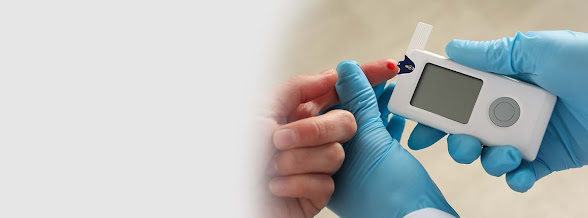Hyperthyroidism and Hypothyroidism: Causes, Symptoms, Diagnosis and Treatment
The thyroid gland is a tiny organ that encircles the trachea, the windpipe, in the front of the neck. It has a butterfly-like shape, with two large wings that wrap around the side of the throat and are smaller in the centre. Our body is made up of glands that produce and release chemicals that aid in certain bodily functions. The thyroid produces hormones that assist in regulating many essential bodily processes. An improperly functioning thyroid can affect the whole body.
In this article, we will learn in detail about the types of thyroid disease and the causes, symptoms, diagnosis, and treatment options for the two main types of thyroids, i.e., hyperthyroidism and hypothyroidism. To make the post enriching, we have gathered insights from a renowned thyroid doctor in Hyderabad at Magna Centre. Continue reading to learn.
Types Of Thyroid Disease
Thyroid disease is classified into four main categories:
- Hypothyroidism
This is the result of insufficient thyroid hormone production by the thyroid gland. There are several potential causes of this, such as hyperthyroidism treatment, pituitary disorders, and autoimmune diseases. Hypothyroidism manifests as fatigue, weight gain, constipation, and depression.
- Hyperthyroidism
This occurs when there is an excess of thyroid hormone produced by the thyroid gland. Goiter, hyperactive pituitary gland, or Graves' disease can all be the cause of this. Anxiety, weight loss, irritability, and tremors are common signs of hyperthyroidism.
- Thyroiditis
The thyroid gland becomes inflamed at this point. There are various forms of thyroiditis, such as subacute thyroiditis (often brought on by a viral infection), postpartum thyroiditis (occurs after childbirth), and autoimmune thyroiditis (also known as Hashimoto's disease). Fatigue, fever, and soreness in the neck and throat are signs of thyroiditis.
- Thyroid Cancer
This is an uncommon kind of cancer that starts in the thyroid gland's cells. Because the symptoms frequently resemble those of other illnesses or conditions, it can be challenging to diagnose in its early stages. A lump in the neck region, hoarseness, trouble swallowing, and chronic pain in the neck or throat region are typical signs of thyroid cancer.
Now let’s learn about the most two common types in more detail.
What is Hyperthyroidism?
Hyperthyroidism is the term used to describe the overactivity of the thyroid glands. Individual bodily processes accelerate as a result of excessive thyroid hormone production. Typically, hyperthyroidism is a rare disorder that affects only 2% to 3% of the population annually.
Causes
The following are typical causes of hyperthyroidism:
- Overconsumption of iodine
- Thyroid gland inflammation
- Excessive use of thyroid hormone medication
- Hyperactive thyroid nodules are also referred to as toxic nodular goitre or multi-nodular goitre.
- Pituitary gland tumour that is not cancerous
Symptoms
- Exhaustion
- Loss of weight
- Accelerating heart rate
- Irritability
- Trembling
- Sweating excessively
- Intolerance to Heat
- Fragile hair and nails
Diagnosis
A healthcare professional can diagnose hyperthyroidism by writing prescriptions for tests that measure thyroid hormone levels or thyroid function. Thyroid hormones, such as thyroxin, T4, and thyroid-stimulating hormone (TSH), are measured through a blood test. To encourage the thyroid to release hormones, the pituitary gland releases TSH. A TSH test can be recommended by a doctor to evaluate these thyroid hormones. High thyroxine and low TSH levels are signs of thyroid overactivity.
Treatments
A patient's doctor can advise additional care based on the underlying cause. The cause and severity of the disorder will determine if a doctor prescribes radioactive therapy, antithyroid medications, or occasionally surgery.
What is Hypothyroidism?
The complete opposite of hyperthyroidism is hypothyroidism. Underactive thyroid glands are the result of this thyroid condition. It indicates that the person's thyroid glands are not secreting enough hormones. The body functions more slowly when thyroid hormone levels are low.
Causes
Following are some potential reasons for hypothyroidism:
- Insufficient iodine
- Congenital hypothyroidism: this illness affects people from birth
- Medications, including cancer medications or heart medications
- Thyroiditis
Symptoms
- Gain in weight
- Dry skin and hair
- Slow-beat heart rate
- Tiredness
- Intolerance to cold temperatures
- Weakness
Diagnosis
Medical professionals often use imaging and blood tests to diagnose hypothyroidism. One can find out their TSH and thyroid hormone levels with a blood test such as the TSH test. A low thyroxine level combined with a high TSH level may suggest underactivity of the thyroid. These values could also mean that an individual's pituitary gland is trying to stimulate the thyroid gland to produce hormones by secreting more TSH.
Treatments
The main treatment for hypothyroidism is medication-assisted thyroid hormone production. It is necessary to take the dosage exactly as prescribed because excessive thyroid hormone intake can exacerbate the symptoms of hyperthyroidism.
Can One Check The Thyroid at Home?
Several experts for thyroid disorder treatment In Hyderabad, explain a simple and quick thyroid self-examination that can be performed at home. All you need for this self-assessment is a glass of water and a mirror.
Use these procedures to perform the thyroid self-examination:
- First, determine the location of the thyroid. The thyroid is typically located in the space between the collar bone and Adam's apple on the front of the neck. The Adam's apple is much easier to spot in men. It is usually easier for women to look up from the collarbone.
- Lean back the head and gaze into the mirror. Take a close look at the neck and try to focus on the area you will be looking at during the examination.
- When you are ready, tilt your head back and take a sip of water. As you swallow, keep an eye on your thyroid. You are searching for lumps or bumps during this examination. After you swallow the water, you might be able to see them.
- To obtain a clear picture of your thyroid, repeat this test several times. Consult your healthcare practitioner if you notice any lumps or bumps.
Should One Exercise If They Have a Thyroid Disease?
Exercise regularly is essential to living a healthy lifestyle. If one has a thyroid condition, they do not need to modify their exercise schedule. Exercise should not harm them and should not deplete their body's thyroid hormones. To ensure that a new fitness regimen is a good fit for a person, it is required to speak with the healthcare provider before beginning.
If one is suffering from thyroid disease and is looking for medical assistance, one can book an appointment with a top endocrinologist in Hyderabad at Magna Centre. The expert doctor will carefully examine the patient and will determine the type of thyroid one has. This will help plan a comprehensive and efficient treatment plan. To learn more, pay a visit now at Magna Centre.
Read More:
.jpg)



Comments
Post a Comment